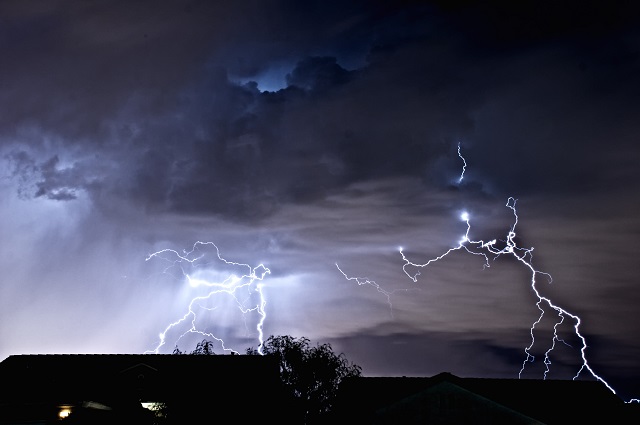News Story
(Below is a backup copy of the original article with as much credit to the publisher as well as the author that we can provide. By no means do we mean to violate any copyright laws. This page is appearing because someone indicated that the original story was unavailable.)
Moses' parting of the Red Sea may NOT have been a miracle and could have been because of a 'meteorological phenomena', study suggests
Moses parting the Red Sea to allow the Israelites to escape the Egyptians may not have been a miracle after all, a new study suggests.
The parting of the Red Sea appears in the Book of Exodus in The Old Testament of The Bible.
It is the moment when Moses performs the miracle to allow the Israelites to escape from the Pharoh's men who were in pursuit.
But according to the University of Leicester's School of Biological Sciences, there were four natural occurrences which could explain the drying of the area.
The parting of the Red Sea appears in the Book of Exodus in the Old Testament of The Bible
+4
View gallery
The parting of the Red Sea appears in the Book of Exodus in the Old Testament of The Bible
The team from the University of Leicester believe that the parting of the sea could have really happened. Pictured, scene from the Old Testament of Moses and the Israelites fleeing Egypt
+4
View gallery
The team from the University of Leicester believe that the parting of the sea could have really happened. Pictured, scene from the Old Testament of Moses and the Israelites fleeing Egypt
READ MORE: Kate and William wish the world a Merry Christmas
Students Rebekah Garratt and Rikesh Kunverji claim that negative surges, eastern winds, tidal surges and Rossby Waves may have caused a resurgence of water large enough to allow people to cross the sea by foot.
Writing in the Journal of Interdisciplinary Topics, they said: 'Investigating into the methods in which the waters may have receded, allowing Moses to cross safely, may be dependent on having 'perfect' conditions, but are still physically feasible events.
'Meteorological phenomena are known to be notoriously unpredictable and can lead to chaotic chains of events leading to extreme phenomena, which may have been viewed by bystanders as the 'parting of the sea'.
TRENDING
One man dead in Colorado mall shooting on Christmas Eve
2.9k viewing now
Wheel of Fortune contestant speaks out after 'worst guess ever'
5.2k viewing now
Kate and William wish the world a Merry Christmas with new photo
4.7k viewing now
'Whether a miraculous act of God or due to some of the unlikely, coincidental phenomena discussed in this paper, the chance of 'parting' is not zero.'
A phenomenon called 'wind setdown' - in which strong and persistent wind can lower water levels in one area while causing water to build up downwind - could be the explanation.
Wind speed would need to be 'considerable' to keep water apart for an extended period, the team said.
The phenomenon have been documented and they are said to be the opposite of storm surges.
Tidal resonance is thought to have allowed Napoleon and his army to have crossed the Red Sea in 1789
+4
View gallery
Tidal resonance is thought to have allowed Napoleon and his army to have crossed the Red Sea in 1789
The Gulf of Suez would be the best location for Moses to cross because it is known for large tidal fluctuations. Pictured, a container ship crosses the Suez Canal towards the Red Sea
+4
View gallery
The Gulf of Suez would be the best location for Moses to cross because it is known for large tidal fluctuations. Pictured, a container ship crosses the Suez Canal towards the Red Sea
READ MORE: Boris Johnson is pictured looking festive celebrating Christmas with his children dressed as Santa
However, there is another possibility that stronger-than-normal spring tides coupled with windy conditions could allow water levels to drop so much that a drying area was formed that would have allowed Moses and the Israelites to cross.
The Gulf of Suez would be the best location for Moses to cross because it is known for large tidal fluctuations.
The team said: 'Tidal resonance occurs when a sudden, unexpected external input, such as extreme wind, excites one of the resonant modes of a local region of the Red Sea, leading to a much more extreme low tide, exposing greater areas of the seabed.'
This is the phenomenon that is thought to have allowed Napoleon and his army to have crossed the Red Sea in 1789.
Also, the paper suggests that a natural occurrence called Rossby Waves may also be to blame.
Rossby Waves occur in rotating fluids and appear in oceans because of the planet's rotation.
The paper said: 'They make the tide higher than usual.
'The waves move vast amounts of water meaning an occurrence at the Red Sea could have moved vast amounts of water, causing the tide to recede by an unusual amount, leaving shallow or no water for the Israelites to walk through.'
The Journal of Interdisciplinary Science Topics was designed to help undergraduates understand scientific paper writing, peer review and publishing.

